18 Mind-Blowing Animal Facts
Key Points
- Some animals are well known to the public while others are more rare and exotic.
- Depending on where you live, you may know more about some types of animals and nothing about others.
- Marvelous animals include species of mammal, reptile, bird, insect, fish, etc!
The animal kingdom is a fascinating place filled with all types of exciting animals. Animals located near where you live are probably better known to you and may not surprise you with facts about them. However, other animals, whether rare or not, might be worlds away and completely new to you.
While some animals are more mundane, other animals will genuinely blow your mind. Consider these animal facts that you may not know. Each was carefully selected because it is incredible. With over 1 million animal species in the world, there are many interesting animal facts to consider.
#18. Animal Facts: Koalas Have Unique Fingerprints
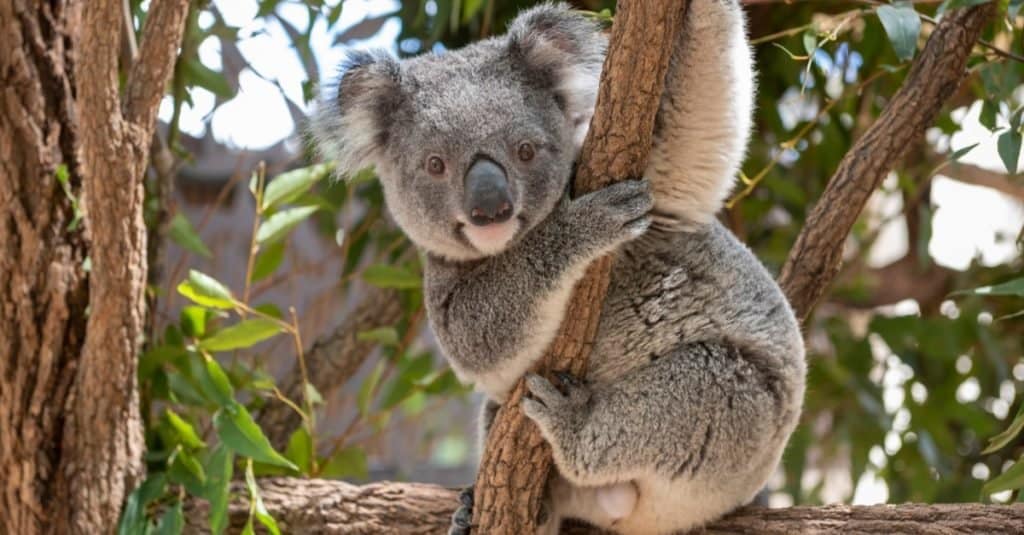
whitejellybeans/Shutterstock.com
A koala’s claw print mimics a human fingerprint. In fact, in Australia, where koalas live, the police fear that a koala may contaminate a crime scene, so a criminal goes free. They have claws on their front and back feet. The claws on their back feet are unique because the second and third digits are fused, and they use them for grooming themselves. That is if they are awake because koalas sleep up to 20 hours per day.
Learn more about koalas.
#17. Animal Facts: Some Sharks Glow in the Dark

Anna Kucherova/Shutterstock.com
There are at least 15 species of deep-sea sharks that produce light with special cells on their underbellies. These sharks live as deep in the ocean as sunlight ever reaches. Marine biologists theorize that the sharks use the eerie green light to hide from other marine animals swimming underneath them. The kitefin, which grows up to 6-feet long, is the longest light-producing animal, called a bioluminescent vertebrate, in the world. Scientists, however, know that some species of giant squid also produce their own light.
Learn more about sharks.
#16. Animal Facts: Slow Lorises are the Only Venomous Primate
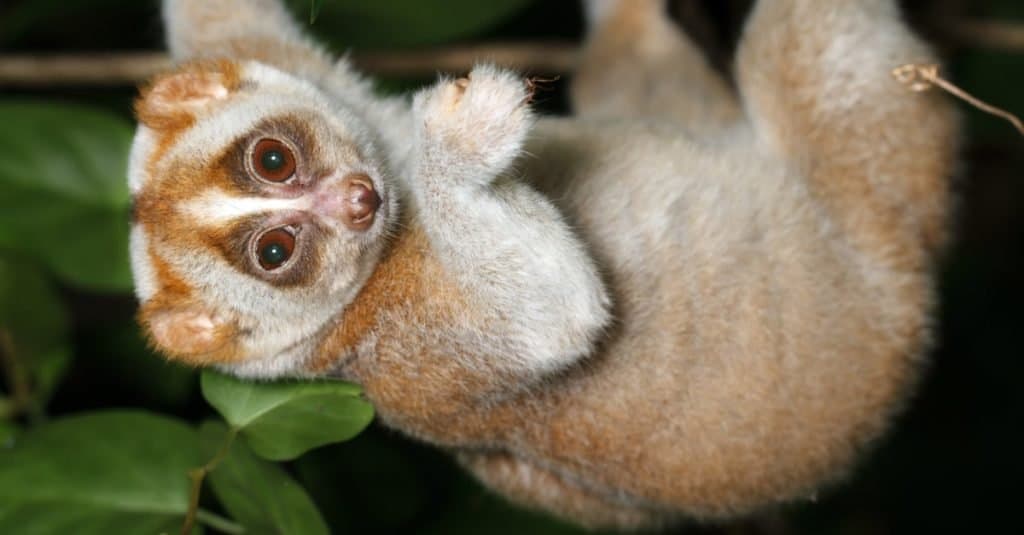
Nachaliti/Shutterstock.com
There are more than 200,000 venomous animals in the world. The only one, however, that is a member of the primate family is the slow loris. Only five mammal species in the world are venomous, but the slow loris is unique because it often bites other slow lorises. In order to produce its venom, this primate raises its arms before licking the underpart of its upper arm. The venom, containing the same compound as found in cat’s dander and other substances, causes the skin to rot. Scientists believe that the most common reason that slow lorises use their venom is to protect their territory.
#15. Animal Facts: Chimpanzees Love to Get Drunk
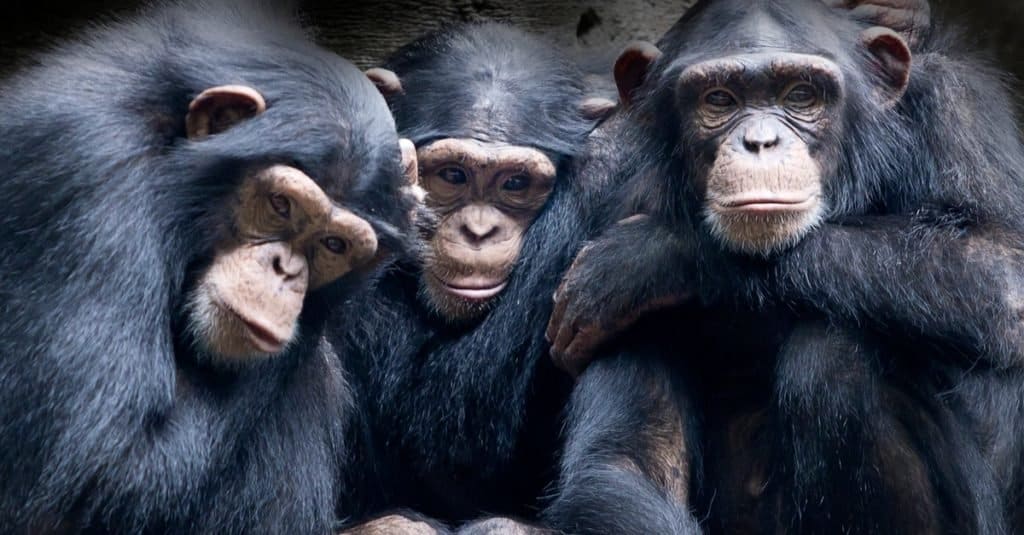
Lili Aini/Shutterstock.com
In Guinea, West Africa, people tap raffia palms and collect the sap, which has an alcohol content between 3.1% and 6.9% by volume. While locals love to drink the sap, so do chimpanzees. They will use a leaf as a cup to drink the fermented sap. It turns out the chimpanzees in Guinea are not the only ones who love to take a drink. Slow lories love to drink alcohol from the Bertam palm, which is about 3.8% alcohol by volume. Meanwhile, green vervet monkeys love to steal tourists’ cocktails in St. Kitts.
Learn more about chimpanzees.
#14. Animal Facts: Wood Frogs Freeze Themselves

Viktor Loki/Shutterstock.com
Wood frogs have a unique way of surviving when it gets frigid outside. Nucleating proteins in the frog’s blood cause water in the frog’s body to freeze. Simultaneously, the frog’s liver produces large amounts of glucose, which props the reptile’s cells up. The process dehydrates the frog’s body so that t can stay hidden under a leaf when the weather gets cold. Brain and heart activity stop. Then, when the weather warms up, water slowly returns to the frog’s bloodstream. Then, its organs start working again, and the frog resumes his hopping.
Learn more about wood frogs.
#13. Animal Facts: Some Turtles Get Oxygen Through Their Butts
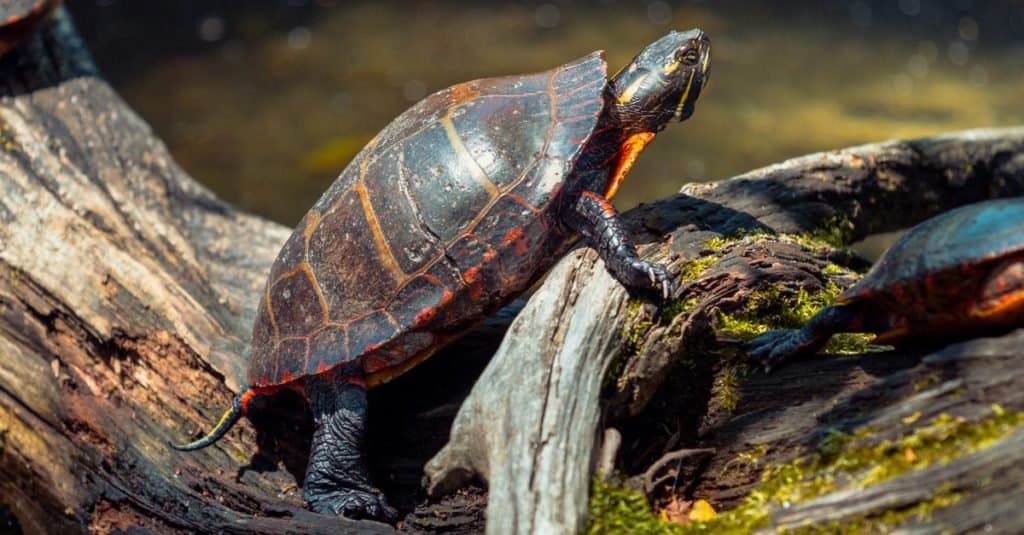
Jonathan Novack/Shutterstock.com
Like the Eastern painted turtle and the Australian Fitzroy river turtle, some species of turtles take in oxygen and let out carbon dioxide through their butts when the weather gets cold. These turtles hibernate for up to 5 months. While hibernating, they use sacs lined with blood vessels near their cloaca to take in oxygen and let out carbon dioxide. Then, the blood vessels disperse the oxygen throughout the turtle’s body while collecting carbon dioxide to expel.
#12. Animal Facts: Queen Mole Rats Make Other Female Mole Rats Infertile
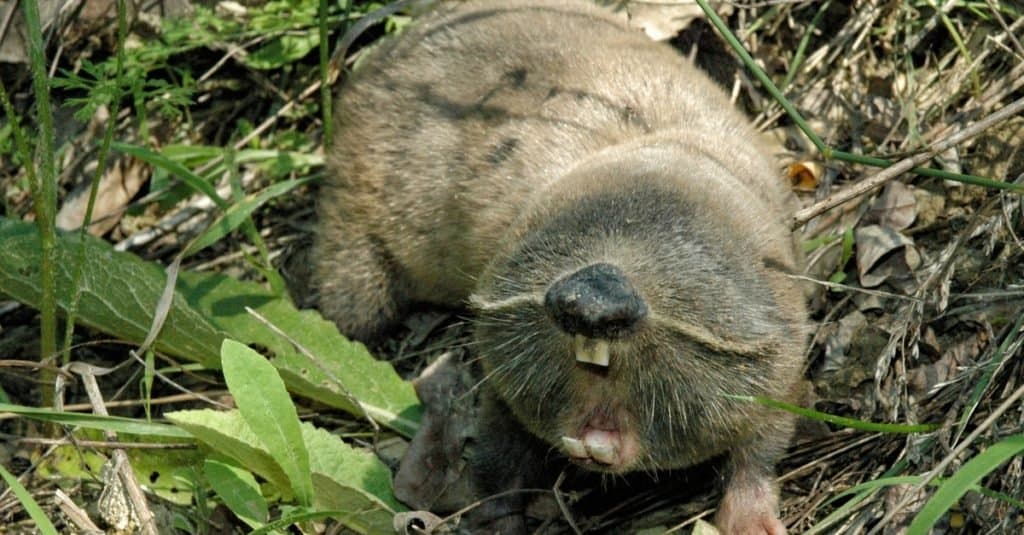
Bildagentur Zoonar GmbH/Shutterstock.com
Mole rats live in colonies with one queen who is lighter in color than all the other mole rats who serve as her servants. In order to make sure that she is the only mole rat to give birth, she secrets a substance in her urine that makes all other female mole rats infertile. When the queen dies, there are brutal fights often ending in death to decide who the new queen will be. About six months after the new queen is determined, she starts secreting the substance in her urine.
Learn more about naked mole rats.
#11. Animal Facts: Horned Lizards Squirt Blood From Their Eyes
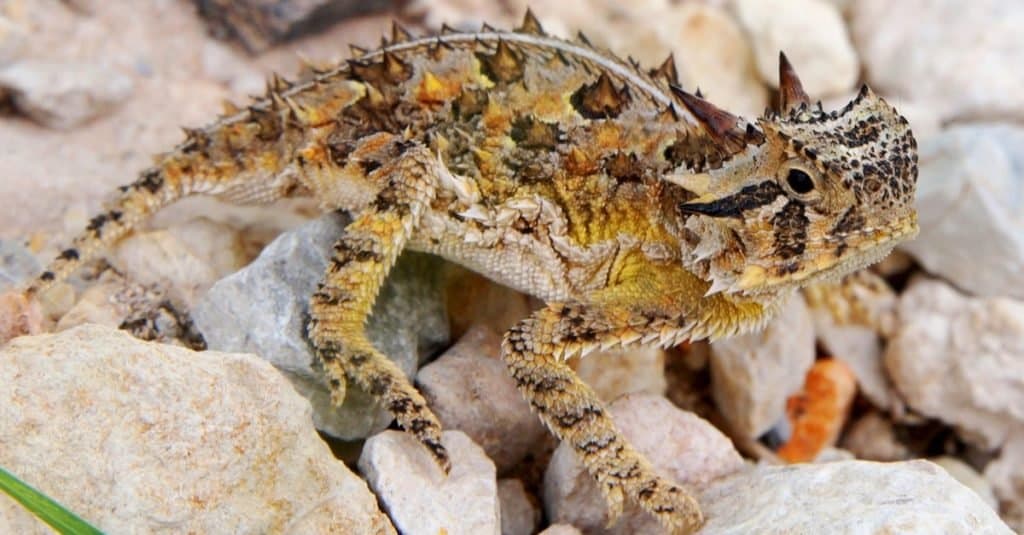
Matt Jeppson/Shutterstock.com
Horned toes have two constricting muscles that line the significant veins around their eyes. When a horned lizard feels threatened, these muscles contract, stopping blood from flowing back to the animal’s heart. Then, if the lizard still feels threatened, it contracts the muscles more, causing blood to squirt from the lizard’s eyes.
Learn more about horned lizards.
#10. Animal Facts: Elephants Have a Specific Human Danger Call
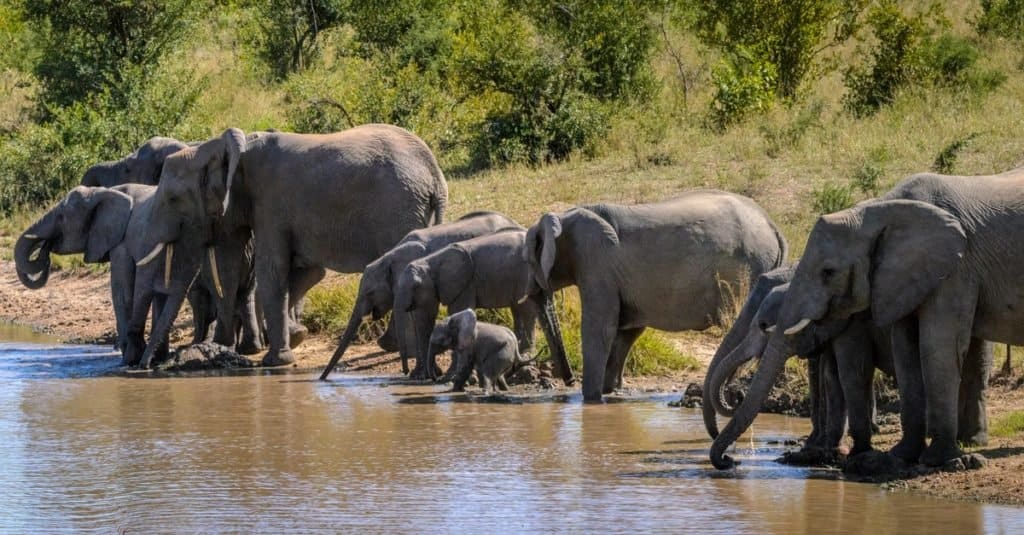
It is a well-known fact that elephants have specific sounds that they make to communicate with each other. Researchers in Kenya played a recording near resting elephants of people talking in the local language. The elephants repeatedly made a low rumbling sound, and either grew restless or moved away. Then, the researchers created a recording of the low rumbling sound and played it to a different group of resting elephants. They immediately grew restless and moved away from the area, even though no humans were nearby. The rumble sounds very similar to the call the African elephants make when bees are nearby to human ears. Still, with the bee rumble, the elephants violently shake their heads while no head shaking is observed with the human rumble.
Learn more about elephants.
#9. Animal Facts: Dogs Smell the Passage of Time
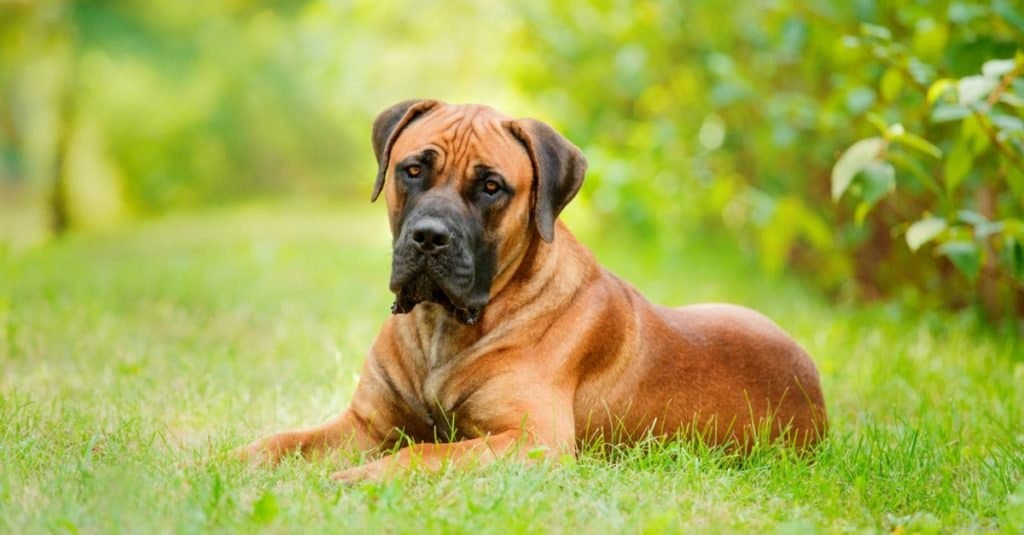
Marina Plevako/Shutterstock.com
Dogs can predict when it is time for you to return home as long as it’s a predictable occurrence, such as going to work or home each day. When you leave home, your scent is strong in the house. Over time, your scent begins to fade. According to researcher Alexandria Horowitz, dogs can tell when it is time for you to return by how much of your scent is left in the house.
Learn more about dogs.
#8. Animal Facts: Reindeer Eyes Turn Colors Depending on the Season

A shiny, mirrored layer behind the retina in the reindeer’s eyes changes colors based on the season. When it’s summer, the layer, called the tapetum lucidum, is a golden color, but as winter arrives, it turns blue. It is the same part that causes many animal’s eyes to seem to glow. Scientists theorize that it turns blue in the winter to take advantage of any available light as they often live in areas where there is no sunlight in the winter.
Learn more about reindeer.
#7. Animal Facts: Dolphins Get High From Pufferfish
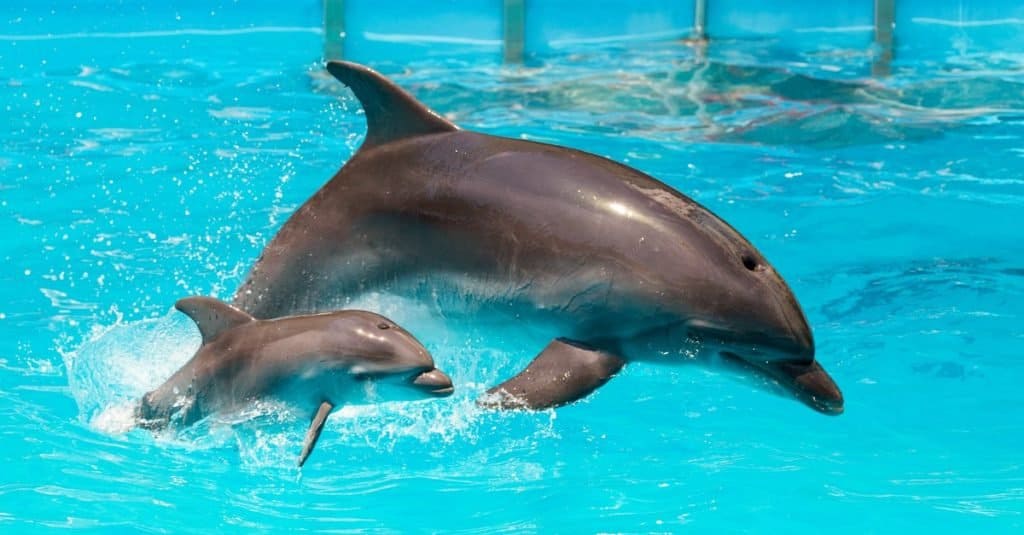
Elena Larina/Shutterstock.com
According to Smithsonian Magazine, dolphins play gently with pufferfish to get poked, causing the pufferfish to send out a toxic substance. In small enough amounts, this substance puts dolphins in a drug-induced trance.
Learn more about dolphins.
#6. Animal Facts: Flamingos Can Only Eat With Their Heads Upside Down

Sergey Uryadnikov/Shutterstock.com
Flamingoes must turn their heads upside down to eat because their mouth acts like a large sieve. Therefore, they need to capture the food in comb-like extensions on its beak using its tongue.
Learn more about flamingos.
#5. Animal Facts: A Female Ferret Will Die if it Goes Into Heat and Cannot Find a Mate

Kerry Hargrove/Shutterstock.com
A female ferret reaches sexual maturity during its first spring. If a ferret goes into heat and cannot find a mate, she will eventually die of aplastic anemia, where the body stops producing new blood cells. This can lead to a prolonged, painful death from infections.
Learn more about ferrets.
#4. Animal Facts: Penguins Do a Thousand Animal Wave
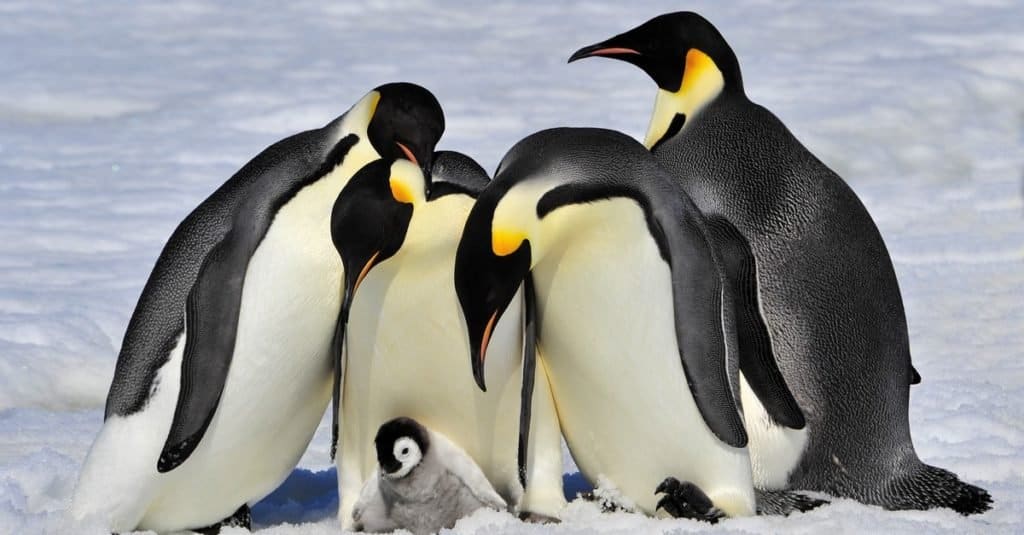
Weather conditions, like 200 miles per hour winds and –58-degree weather, make it hard for emperor penguins to survive Antarctic winters. Therefore, they huddle together in groups of up to 1,000 birds so that they can rely on each other’s body warmth to stay alive. When a single penguin moves as little as 0.8-inches, the whole group moves the same amount to keep the huddle together. This little bit of movement typically happens every 6-to-12 seconds.
Learn more about penguins.
#3. Animal Facts: Worker Fire Ants Take 250 Power Naps Daily
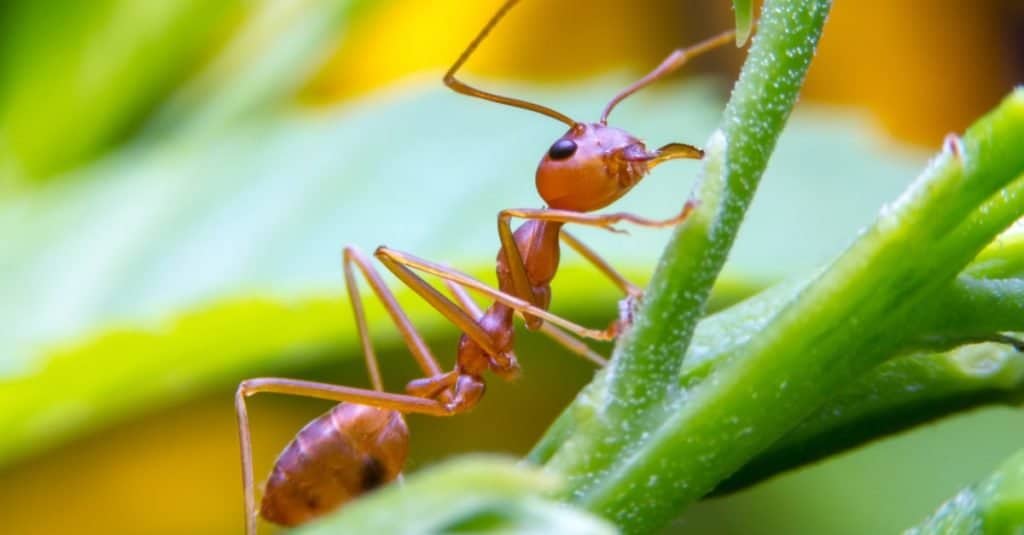
wnarong/Shutterstock.com
Researchers have discovered that worker fire ants take up to 250 power naps daily. Each nap lasts only about a minute. About 20% of a colony is asleep all the time. By comparison, queens slept about 90 times a day for an average of 6 minutes.
Learn more about ants.
#2. Animal Facts: Polar Bears Have Black Skin
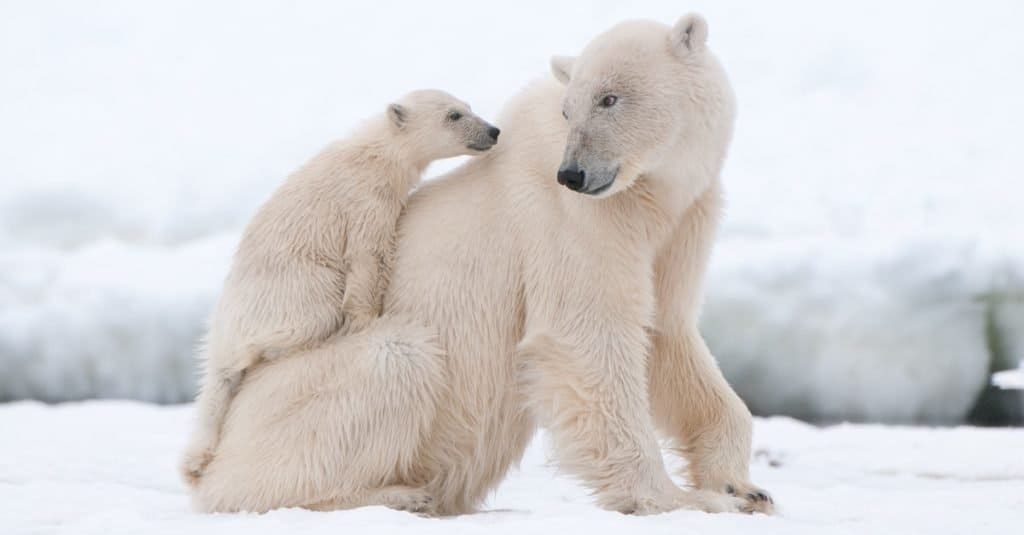
Polar bears have black skin to help them absorb as much heat as possible. Their fur is not white but consists of transparent, hollow tubes of keratin. These tubes scatter the light so that we perceive most polar bears to be white. Each tube helps pass light closer to the bear’s skin, where he can use it to stay warm.
Learn more about polar bears.
#1. Animal Facts: A Baby Kangaroo is the Size of a Grape

IntoTheWorld/Shutterstock.com
When a baby kangaroo, called a joey, is born, he is about the size of a grape. He travels unaided through his mom’s fur until he reaches her pouch, where he will stay for the next 10 months. He is so weak that he cannot suck, so the mother pumps the milk down his throat.
Learn more about kangaroos.
Summary: 18 Mind-Blowing Animal Facts
| Rank | Fact |
|---|---|
| 1 | A Baby Kangaroo is the Size of a Grape |
| 2 | Polar Bears Have Black Skin |
| 3 | Worker Fire Ants Take 250 Power Naps Daily |
| 4 | Penguins Do a Thousand Animal Wave |
| 5 | A Female Ferret Will Die if it Goes Into Heat and Cannot Find a Mate |
| 6 | Flamingos Can Only Eat With Their Heads Upside Down |
| 7 | Dolphins Get High From Pufferfish |
| 8 | Reindeer Eyes Turn Colors Depending on the Season |
| 9 | Dogs Smell the Passage of Time |
| 10 | Elephants Have a Specific Human Danger Call |
| 11 | Horned Lizards Squirt Blood From Their Eyes |
| 12 | Queen Mole Rats Make Other Female Mole Rats Infertile |
| 13 | Some Turtles Get Oxygen Through Their Butts |
| 14 | Wood Frogs Freeze Themselves |
| 15 | Chimpanzees Love to Get Drunk |
| 16 | Slow Lorises are the Only Venomous Primate |
| 17 | Some Sharks Glow in the Dark |
| 18 | Koalas Have Unique Fingerprints |
Up Next…
Now that your interest is piqued, we have some articles that further dive into more specific animals and facts about them:
- 10 Incredible Snake Facts – Snakes are a pretty common animal, but you may not know everything there is to know!
- 10 Incredible Shark Facts – Sharks are scary but also one of the most interesting animals on the planet.
- 25 Dog Facts for Kids – Kids and dogs make great companions for each other. Teach your kids all they want to know about their furry friends!
More from A-Z Animals
Key Points
- Some animals are well known to the public while others are more rare and exotic.
- Depending on where you live, you may know more about some types of animals and nothing about others.
- Marvelous animals include species of mammal, reptile, bird, insect, fish, etc!
The animal kingdom is a fascinating place filled with all types of exciting animals. Animals located near where you live are probably better known to you and may not surprise you with facts about them. However, other animals, whether rare or not, might be worlds away and completely new to you.
While some animals are more mundane, other animals will genuinely blow your mind. Consider these animal facts that you may not know. Each was carefully selected because it is incredible. With over 1 million animal species in the world, there are many interesting animal facts to consider.
#18. Animal Facts: Koalas Have Unique Fingerprints

whitejellybeans/Shutterstock.com
A koala’s claw print mimics a human fingerprint. In fact, in Australia, where koalas live, the police fear that a koala may contaminate a crime scene, so a criminal goes free. They have claws on their front and back feet. The claws on their back feet are unique because the second and third digits are fused, and they use them for grooming themselves. That is if they are awake because koalas sleep up to 20 hours per day.
Learn more about koalas.
#17. Animal Facts: Some Sharks Glow in the Dark

Anna Kucherova/Shutterstock.com
There are at least 15 species of deep-sea sharks that produce light with special cells on their underbellies. These sharks live as deep in the ocean as sunlight ever reaches. Marine biologists theorize that the sharks use the eerie green light to hide from other marine animals swimming underneath them. The kitefin, which grows up to 6-feet long, is the longest light-producing animal, called a bioluminescent vertebrate, in the world. Scientists, however, know that some species of giant squid also produce their own light.
Learn more about sharks.
#16. Animal Facts: Slow Lorises are the Only Venomous Primate

Nachaliti/Shutterstock.com
There are more than 200,000 venomous animals in the world. The only one, however, that is a member of the primate family is the slow loris. Only five mammal species in the world are venomous, but the slow loris is unique because it often bites other slow lorises. In order to produce its venom, this primate raises its arms before licking the underpart of its upper arm. The venom, containing the same compound as found in cat’s dander and other substances, causes the skin to rot. Scientists believe that the most common reason that slow lorises use their venom is to protect their territory.
#15. Animal Facts: Chimpanzees Love to Get Drunk

Lili Aini/Shutterstock.com
In Guinea, West Africa, people tap raffia palms and collect the sap, which has an alcohol content between 3.1% and 6.9% by volume. While locals love to drink the sap, so do chimpanzees. They will use a leaf as a cup to drink the fermented sap. It turns out the chimpanzees in Guinea are not the only ones who love to take a drink. Slow lories love to drink alcohol from the Bertam palm, which is about 3.8% alcohol by volume. Meanwhile, green vervet monkeys love to steal tourists’ cocktails in St. Kitts.
Learn more about chimpanzees.
#14. Animal Facts: Wood Frogs Freeze Themselves

Viktor Loki/Shutterstock.com
Wood frogs have a unique way of surviving when it gets frigid outside. Nucleating proteins in the frog’s blood cause water in the frog’s body to freeze. Simultaneously, the frog’s liver produces large amounts of glucose, which props the reptile’s cells up. The process dehydrates the frog’s body so that t can stay hidden under a leaf when the weather gets cold. Brain and heart activity stop. Then, when the weather warms up, water slowly returns to the frog’s bloodstream. Then, its organs start working again, and the frog resumes his hopping.
Learn more about wood frogs.
#13. Animal Facts: Some Turtles Get Oxygen Through Their Butts

Jonathan Novack/Shutterstock.com
Like the Eastern painted turtle and the Australian Fitzroy river turtle, some species of turtles take in oxygen and let out carbon dioxide through their butts when the weather gets cold. These turtles hibernate for up to 5 months. While hibernating, they use sacs lined with blood vessels near their cloaca to take in oxygen and let out carbon dioxide. Then, the blood vessels disperse the oxygen throughout the turtle’s body while collecting carbon dioxide to expel.
#12. Animal Facts: Queen Mole Rats Make Other Female Mole Rats Infertile

Bildagentur Zoonar GmbH/Shutterstock.com
Mole rats live in colonies with one queen who is lighter in color than all the other mole rats who serve as her servants. In order to make sure that she is the only mole rat to give birth, she secrets a substance in her urine that makes all other female mole rats infertile. When the queen dies, there are brutal fights often ending in death to decide who the new queen will be. About six months after the new queen is determined, she starts secreting the substance in her urine.
Learn more about naked mole rats.
#11. Animal Facts: Horned Lizards Squirt Blood From Their Eyes

Matt Jeppson/Shutterstock.com
Horned toes have two constricting muscles that line the significant veins around their eyes. When a horned lizard feels threatened, these muscles contract, stopping blood from flowing back to the animal’s heart. Then, if the lizard still feels threatened, it contracts the muscles more, causing blood to squirt from the lizard’s eyes.
Learn more about horned lizards.
#10. Animal Facts: Elephants Have a Specific Human Danger Call

It is a well-known fact that elephants have specific sounds that they make to communicate with each other. Researchers in Kenya played a recording near resting elephants of people talking in the local language. The elephants repeatedly made a low rumbling sound, and either grew restless or moved away. Then, the researchers created a recording of the low rumbling sound and played it to a different group of resting elephants. They immediately grew restless and moved away from the area, even though no humans were nearby. The rumble sounds very similar to the call the African elephants make when bees are nearby to human ears. Still, with the bee rumble, the elephants violently shake their heads while no head shaking is observed with the human rumble.
Learn more about elephants.
#9. Animal Facts: Dogs Smell the Passage of Time

Marina Plevako/Shutterstock.com
Dogs can predict when it is time for you to return home as long as it’s a predictable occurrence, such as going to work or home each day. When you leave home, your scent is strong in the house. Over time, your scent begins to fade. According to researcher Alexandria Horowitz, dogs can tell when it is time for you to return by how much of your scent is left in the house.
Learn more about dogs.
#8. Animal Facts: Reindeer Eyes Turn Colors Depending on the Season

A shiny, mirrored layer behind the retina in the reindeer’s eyes changes colors based on the season. When it’s summer, the layer, called the tapetum lucidum, is a golden color, but as winter arrives, it turns blue. It is the same part that causes many animal’s eyes to seem to glow. Scientists theorize that it turns blue in the winter to take advantage of any available light as they often live in areas where there is no sunlight in the winter.
Learn more about reindeer.
#7. Animal Facts: Dolphins Get High From Pufferfish

Elena Larina/Shutterstock.com
According to Smithsonian Magazine, dolphins play gently with pufferfish to get poked, causing the pufferfish to send out a toxic substance. In small enough amounts, this substance puts dolphins in a drug-induced trance.
Learn more about dolphins.
#6. Animal Facts: Flamingos Can Only Eat With Their Heads Upside Down

Sergey Uryadnikov/Shutterstock.com
Flamingoes must turn their heads upside down to eat because their mouth acts like a large sieve. Therefore, they need to capture the food in comb-like extensions on its beak using its tongue.
Learn more about flamingos.
#5. Animal Facts: A Female Ferret Will Die if it Goes Into Heat and Cannot Find a Mate

Kerry Hargrove/Shutterstock.com
A female ferret reaches sexual maturity during its first spring. If a ferret goes into heat and cannot find a mate, she will eventually die of aplastic anemia, where the body stops producing new blood cells. This can lead to a prolonged, painful death from infections.
Learn more about ferrets.
#4. Animal Facts: Penguins Do a Thousand Animal Wave

Weather conditions, like 200 miles per hour winds and –58-degree weather, make it hard for emperor penguins to survive Antarctic winters. Therefore, they huddle together in groups of up to 1,000 birds so that they can rely on each other’s body warmth to stay alive. When a single penguin moves as little as 0.8-inches, the whole group moves the same amount to keep the huddle together. This little bit of movement typically happens every 6-to-12 seconds.
Learn more about penguins.
#3. Animal Facts: Worker Fire Ants Take 250 Power Naps Daily

wnarong/Shutterstock.com
Researchers have discovered that worker fire ants take up to 250 power naps daily. Each nap lasts only about a minute. About 20% of a colony is asleep all the time. By comparison, queens slept about 90 times a day for an average of 6 minutes.
Learn more about ants.
#2. Animal Facts: Polar Bears Have Black Skin

Polar bears have black skin to help them absorb as much heat as possible. Their fur is not white but consists of transparent, hollow tubes of keratin. These tubes scatter the light so that we perceive most polar bears to be white. Each tube helps pass light closer to the bear’s skin, where he can use it to stay warm.
Learn more about polar bears.
#1. Animal Facts: A Baby Kangaroo is the Size of a Grape

IntoTheWorld/Shutterstock.com
When a baby kangaroo, called a joey, is born, he is about the size of a grape. He travels unaided through his mom’s fur until he reaches her pouch, where he will stay for the next 10 months. He is so weak that he cannot suck, so the mother pumps the milk down his throat.
Learn more about kangaroos.
Summary: 18 Mind-Blowing Animal Facts
| Rank | Fact |
|---|---|
| 1 | A Baby Kangaroo is the Size of a Grape |
| 2 | Polar Bears Have Black Skin |
| 3 | Worker Fire Ants Take 250 Power Naps Daily |
| 4 | Penguins Do a Thousand Animal Wave |
| 5 | A Female Ferret Will Die if it Goes Into Heat and Cannot Find a Mate |
| 6 | Flamingos Can Only Eat With Their Heads Upside Down |
| 7 | Dolphins Get High From Pufferfish |
| 8 | Reindeer Eyes Turn Colors Depending on the Season |
| 9 | Dogs Smell the Passage of Time |
| 10 | Elephants Have a Specific Human Danger Call |
| 11 | Horned Lizards Squirt Blood From Their Eyes |
| 12 | Queen Mole Rats Make Other Female Mole Rats Infertile |
| 13 | Some Turtles Get Oxygen Through Their Butts |
| 14 | Wood Frogs Freeze Themselves |
| 15 | Chimpanzees Love to Get Drunk |
| 16 | Slow Lorises are the Only Venomous Primate |
| 17 | Some Sharks Glow in the Dark |
| 18 | Koalas Have Unique Fingerprints |
Up Next…
Now that your interest is piqued, we have some articles that further dive into more specific animals and facts about them:
- 10 Incredible Snake Facts – Snakes are a pretty common animal, but you may not know everything there is to know!
- 10 Incredible Shark Facts – Sharks are scary but also one of the most interesting animals on the planet.
- 25 Dog Facts for Kids – Kids and dogs make great companions for each other. Teach your kids all they want to know about their furry friends!






